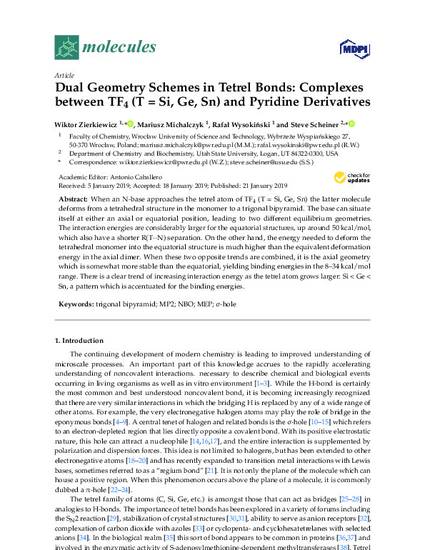
When an N-base approaches the tetrel atom of TF4(T = Si, Ge, Sn) the latter moleculedeforms from a tetrahedral structure in the monomer to a trigonal bipyramid. The base can situateitself at either an axial or equatorial position, leading to two different equilibrium geometries.The interaction energies are considerably larger for the equatorial structures, up around 50 kcal/mol,which also have a shorter R(T··N) separation. On the other hand, the energy needed to deform thetetrahedral monomer into the equatorial structure is much higher than the equivalent deformationenergy in the axial dimer. When these two opposite trends are combined, it is the axial geometrywhich is somewhat more stable than the equatorial, yielding binding energies in the 8–34 kcal/molrange. There is a clear trend of increasing interaction energy as the tetrel atom grows larger: Si < Ge
